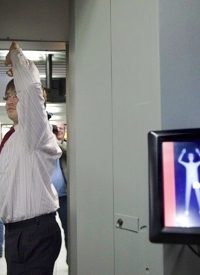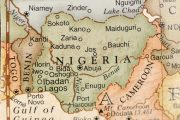
Those full-body scanners the Transportation Security Administration has deployed in airports across the country have raised numerous privacy concerns. They can, after all, see right through clothing and provide a very detailed view of a person’s most intimate anatomical features — so detailed, in fact, that when a TSA screener’s genitalia were spotted by his coworkers during a training session and became an object of ridicule, the screener assaulted one of those making fun of his puny manhood.
They’re also detailed enough that Nigerian aviation security officials have been getting their jollies from the images the Lagos airport’s scanners are producing, according to a report from the Nigerian newspaper ThisDay.
The scanners were installed in Nigerian airports after “underwear bomber” Umar Farouk Abdulmutallab, who was from Lagos, attempted to blow up a Detroit-bound airliner last Christmas. The scanners are intended for use only on U.S.-bound passengers, but ThisDay found that other passengers were being subjected to them as well, through such underhanded tactics as turning off one of the conventional scanners, leaving passengers with the unenviable choice of standing in a long line for the remaining conventional scanners or submitting to the full-body scanner.
In addition, the newspaper observed that “during off-peak periods, the aviation security officials … usually stroll from the cubicle located in a hidden corner on the right side of the screening area … to catch a glimpse of some of the passengers entering the machine and immediately go back to view the naked images, in order to match the faces with the images.”
The TSA claims that its scanners also blur faces and that “the officer who assists the passenger [into the scanner] never sees the image the technology produces. The officer who views the image is remotely located in a secure resolution room and never sees the passenger.” One hopes — perhaps against hope, given the government’s less than stellar record of protecting people’s privacy — that these policies are strictly upheld. Even then, however, the fact that the images are detailed enough that Nigerian security officers want to see which face goes with which body ought in itself to be cause for concern. The full-body scans are, indeed, a form of involuntary “e-stripping,” as ThisDay describes them.
Furthermore, as Sean McLachlan of Gadling.com points out, the scanners are relatively useless against anyone determined to bring down an airplane. McLachlan writes that British Conservative Member of Parliament Ben Wallace, a former adviser for the firm that developed airport scanners, said that the scanners wouldn’t have detected the “liquids, powders, and thin plastics” that Abdulmutallab had buried in his BVDs. Rafi Sela, who helped plan security at Israel’s Ben Gurion Airport, “told the Canadian Parliament that the machines are useless, and that he could pass through them undetected with enough explosives to bring down a Boeing 747,” says McLachlan, adding that Sela noted that “there is a reason Israel,” known for its strict airport security, “has not invested in the machines.”
Airline passengers, therefore, are being put through a humiliating and offensive electronic stripping procedure with possibly very little value — unless you’re an airport security official with a hankering for free porn.
Photo: In this Dec, 28, 2009 file photo, an employee of Schiphol stands inside a body scanner during a demonstration at a press briefing at Schiphol airport, Netherlands: AP Images



